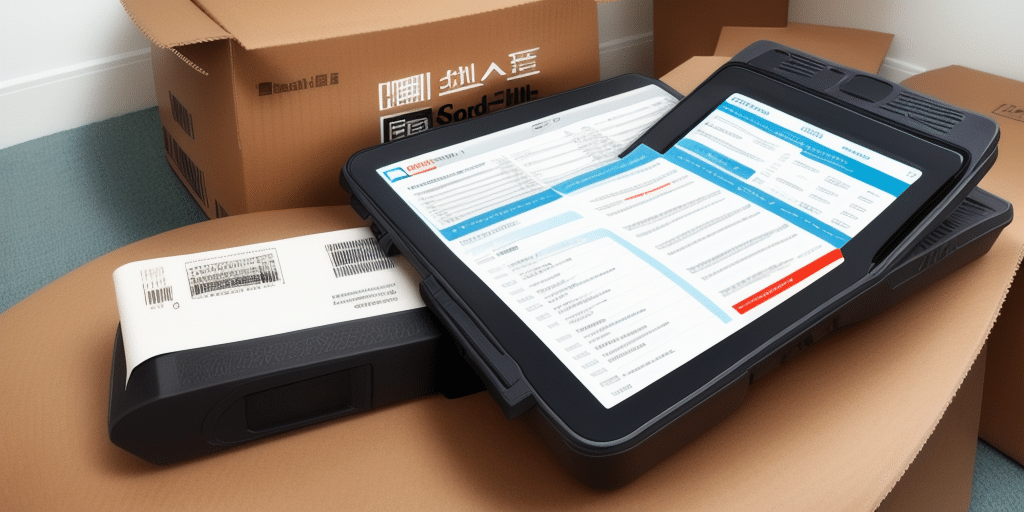USPS Mail Rates for 2022: Comprehensive Guide
The United States Postal Service (USPS) remains the most prevalent method for shipping mail domestically within the United States, handling over 472 million mail pieces daily. For businesses, staying informed about USPS mail rates is crucial for controlling shipping expenses and sustaining profitability. This article offers an in-depth analysis of USPS mail rates in 2022, highlighting essential information businesses need to effectively navigate these changes.
Historical Overview of USPS Mail Rates in 2021
In 2021, USPS offered a variety of mail services with rates that fluctuated based on weight, size, and service type. The primary services included First-Class Mail, Priority Mail, Priority Mail Express, and Media Mail. First-Class Mail rates ranged from $0.55 to $5.75, depending on the mail’s weight and dimensions. Priority Mail began at $7.16, while Priority Mail Express started at $22.75. Media Mail offered a starting rate of $2.89, catering specifically to educational and media-related shipments.
Additionally, USPS provided discounted rates for specific mail categories, such as non-profit organizations and high-volume businesses. In 2021, USPS introduced the USPS Loyalty Program, which offered additional discounts to businesses frequently using Priority Mail and Priority Mail Express services. This program was designed to encourage businesses to rely more on USPS for their mailing needs by rewarding consistent usage.
How USPS Determines Mail Rates
USPS mail rates are influenced by several factors, including the weight and size of the mail, its destination, and the type of service selected. For instance, Priority Mail Express typically incurs higher costs compared to First-Class Mail due to its expedited delivery times.
Annually, USPS adjusts its mail rates based on various economic indicators such as inflation, labor costs, and transportation expenses. In 2022, USPS announced a price increase for its mail services, effective from January 2022 [Source].
Moreover, USPS offers discounted rates for bulk mail and nonprofit organizations that meet specific criteria and send large volumes of mail. The availability of flat-rate boxes and envelopes also provides cost-effective options for shipping heavier items, regardless of the destination.
Changes in USPS Mail Rates for 2022
In 2022, USPS implemented a price increase across almost all its services, including First-Class Mail, Priority Mail, and Priority Mail Express. This rate adjustment was approved by the Postal Regulatory Commission (PRC) and aimed to address rising operational costs.
Specifically, First-Class Mail rates increased by $0.03, raising the starting rate to $0.58 from $0.55 in 2021. Priority Mail and Priority Mail Express saw average increases of approximately 5.9%. Services like Media Mail also experienced rate hikes.
The USPS cited escalating expenses related to transportation, labor, and materials as primary reasons for the rate increases. Additionally, the ongoing impacts of the COVID-19 pandemic on USPS operations and finances contributed to the necessity of these adjustments.
Despite the rate increases, USPS introduced new services and enhancements in 2022. These included improved tracking and delivery options for Priority Mail and Priority Mail Express. The expansion of the Informed Delivery service allows customers to preview their incoming mail and packages prior to delivery, enhancing user experience.
Calculating USPS Mail Rates for Your Business Needs
Calculating USPS mail rates for business purposes involves several considerations, including the mail's weight, dimensions, destination, and the chosen service type.
USPS provides various tools to assist businesses in accurately calculating their mail rates. These include online postage calculators that estimate shipping costs based on specific parameters. Additionally, volume-based discounts are available for businesses that consistently send large quantities of mail.
Businesses that qualify for higher shipping volumes can benefit from Commercial Base Pricing (CBP) and Commercial Plus Pricing (CPP), which offer more competitive rates compared to standard retail prices. These pricing tiers are accessible to businesses that meet certain shipment volume and size requirements.
It's essential to recognize that USPS mail rates may fluctuate based on seasonal demand. For example, during peak mailing seasons like the holidays, rates might increase due to heightened shipping volume. Businesses should plan ahead and budget for potential rate changes during these periods.
Impact of USPS Mail Rate Increases on Small Businesses
Small businesses that heavily depend on USPS mail services are significantly affected by rate increases. Elevated shipping costs can lead to higher operational expenses, potentially impacting overall profitability.
To mitigate the effects of rate hikes, small businesses can leverage several strategies. Utilizing USPS volume-based discounts can lower per-shipment costs. Additionally, negotiating more favorable shipping rates with USPS or exploring alternative shipping carriers can provide cost savings.
Exploring alternative shipping options, such as regional carriers or shipping consolidators, allows businesses to find more affordable rates for specific types of shipments. Implementing cost-saving techniques like optimizing packaging size and reducing unnecessary mailings also contribute to minimizing shipping expenses.
Comparing USPS Mail Rates to Other Shipping Services
While USPS is a popular choice for shipping within the United States, it is not the sole option available to businesses. Competitors like UPS and FedEx offer their own range of shipping services, each with distinct pricing models and service levels.
When evaluating USPS against other carriers, businesses should consider factors such as package weight and size, shipping destination, and required delivery times. For instance, FedEx often provides faster international shipping options, whereas USPS may offer more economical domestic rates.
Another critical factor in selecting a shipping service is the level of tracking and insurance provided. Some carriers offer more comprehensive tracking features and higher insurance limits, which can be valuable for businesses sending high-value or fragile items.
Customer service quality is also an essential consideration. Businesses should assess each carrier's reputation for timely and reliable deliveries, as well as their responsiveness to customer inquiries and issue resolutions.
Strategies for Reducing Shipping Costs Amid USPS Mail Rate Increases
In response to USPS rate hikes, businesses can adopt multiple strategies to decrease their shipping expenses:
- Optimize Packaging: Reducing the size and weight of packages can lead to lower shipping costs. Custom-sized packaging minimizes excess space, potentially reducing the service class required.
- Use Economy Services: Opting for economical services like Media Mail for eligible items can result in significant savings.
- Consolidate Shipments: Combining multiple shipments into a single package can lower the overall shipping costs.
- Negotiate Shipping Rates: Engaging with USPS or alternative carriers to negotiate better rates can help secure more favorable shipping terms.
- Implement Online Shipping Tools: Utilizing USPS's online tools for discounted rates, label printing, and package tracking can streamline operations and reduce costs.
- Integrate a Shipping Cost Calculator: Adding a shipping cost calculator to your website allows customers to estimate shipping fees upfront, thereby reducing cart abandonment and enhancing satisfaction.
Additionally, businesses can explore alternative shipping methods such as drop-shipping or partnering with local delivery services to further lower shipping expenditures.
Preparing Your Business for USPS Mail Rate Changes in 2022
To effectively manage the impact of USPS mail rate increases in 2022, businesses should consider the following steps:
- Budget Planning: Allocate funds to accommodate the expected rise in shipping costs, ensuring that budgeting reflects the new rate structures.
- Optimize Shipping Processes: Streamline shipping workflows by utilizing online postage services, adhering to commercial pricing tiers, and taking advantage of volume-based discounts.
- Communicate with Customers: Inform customers in advance about upcoming shipping rate changes to set clear expectations and avoid unexpected surprises at checkout.
- Explore Alternative Shipping Options: Research and compare rates among different carriers, including regional carriers and shipping consolidators, to identify more cost-effective solutions.
- Review Shipping Policies: Assess and update shipping policies to enhance efficiency. This may involve refining packaging procedures, optimizing delivery routes, and implementing robust tracking systems to minimize the risk of lost or delayed packages.
By proactively addressing these areas, businesses can better navigate the financial challenges posed by USPS mail rate increases and maintain operational efficiency.
The Pros and Cons of Using USPS for Shipping Needs
The United States Postal Service offers several benefits and drawbacks for businesses considering it as their primary shipping carrier:
Advantages
- Affordability: USPS often provides competitive rates, especially for lightweight and standard-sized packages, making it a cost-effective choice for many businesses.
- Reliability: With nationwide coverage, USPS ensures that mail and packages reach virtually every address in the country.
- Flat-Rate Options: USPS's flat-rate boxes allow businesses to ship items of specific sizes and weights for a fixed price, simplifying budgeting for shipping costs.
- Universal Service Obligation: USPS is mandated to deliver to all U.S. addresses, regardless of location, ensuring comprehensive coverage.
Disadvantages
- Limited Customer Support: USPS may offer less personalized customer service compared to private carriers like UPS or FedEx.
- Slower Delivery Times: Some USPS services, particularly non-express options, may have longer delivery times compared to competitors.
- Package Tracking Limitations: While USPS provides tracking for most services, the level of detail and updates may not be as comprehensive as those offered by other carriers.
- Potential for Lost or Damaged Packages: Although USPS has measures in place to protect shipments, there is still a risk of loss or damage, which can affect customer satisfaction.
Ultimately, businesses should weigh these pros and cons in the context of their specific shipping needs and consider a hybrid approach that leverages multiple carriers to optimize cost and efficiency.
The Relationship Between Postal Regulations and Mail Rates
USPS mail rates are significantly influenced by postal regulations and policies established by the Postal Regulatory Commission (PRC). These regulations are designed to ensure that USPS operates as a self-sustaining entity, with mail rates reflecting the costs of services provided.
Changes in government policies, such as modifications to tax laws or import/export regulations, can also impact USPS rates. These policy shifts may alter operational costs or affect the demand for certain services, necessitating adjustments to mail rates.
Fuel costs are another critical factor affecting USPS rates. Since USPS relies heavily on transportation for mail delivery, fluctuations in fuel prices directly impact shipping costs. Increases in fuel prices often lead to higher mail rates to offset the additional expenses.
Additionally, USPS competes with other shipping carriers. As more companies enter the shipping market, USPS must consider competitive pricing to retain and attract customers, which can result in rate adjustments.
The Future of USPS Mail Rates: Predictions and Emerging Trends
As the landscape of e-commerce continues to evolve, USPS mail rates are expected to be influenced by several key trends and developments:
- Increasing E-Commerce Demand: The sustained growth of online shopping drives up the volume of packages, potentially leading to both economies of scale and the necessity for rate adjustments to manage higher shipping volumes.
- Service Enhancements: USPS is likely to continue evolving its service offerings, focusing on improving speed, reliability, and tracking capabilities to meet the demands of modern businesses and consumers.
- Technological Innovations: The adoption of automation, advanced sorting technologies, and the exploration of unmanned aerial vehicles (drones) could enhance USPS's operational efficiency, potentially influencing future mail rate structures.
- Sustainability Initiatives: As environmental concerns grow, USPS may invest in greener delivery methods, which could involve changes in cost structures and consequently affect mail rates.
In conclusion, understanding current and future USPS mail rates is essential for businesses reliant on these services. By staying informed about rate changes and emerging trends, companies can better strategize their shipping processes to maintain cost-effectiveness and service quality.
In conclusion, understanding USPS mail rates is crucial for businesses that rely heavily on mail services. As USPS moved into 2022, businesses took steps to manage the impact of rate increases, such as optimizing shipping and exploring alternative shipping methods. By staying informed and proactive, businesses were able to maintain profitability and provide quality shipping services to their customers.








